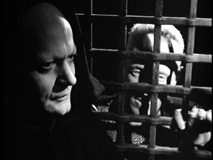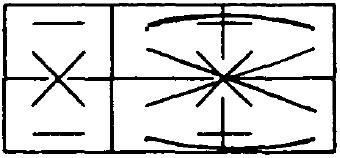Thursday, October 12, 2023
Fast Times at Copenhagen High
Tuesday, January 31, 2023
Monday, August 16, 2021
The Space of Possibilities
The title is from "Federico Ardila on Math, Music and
the Space of Possibilities," a podcast from Steven Strogatz's
Quanta Magazine series. The transcript is dated March 29, 2021.
Ardila: … in a nutshell, what combinatorics is about is just
the study of possibilities and how do you organize them,
given that there’s too many of them to list them.
Strogatz: So, I love it. Combinatorics is not just
the art of the possible, but the enumeration of the possible,
the counting of the possible and the organizing of the possible.
Strogatz: It’s such a poetic image, actually: the space of possibilities.
This journal on the podcast date, March 29, 2021 —
A more precise approach to the space of possibilities:
Wednesday, May 26, 2021
Heavy Metaphor
Earlier posts that are also tagged "Points Omega" suggest some
context for a May 19 New Republic illustration.

x → -1/x
See as well
"Flowers and Brown."
Monday, October 26, 2020
Theory

These news items suggest a review —
The above “Pynchon’s Paranoid History” page number appeared
in this journal on Groundhog Day, 2015 —
David Justice on a Zeta-related theory —
Friday, May 26, 2017
Night at the Museum
Monday, February 2, 2015
Spielraum as Ω
|
From "Origins of the Logical Theory of Probability: von Kries, Wittgenstein, Waismann," by Michael Heidelberger — "Von Kries calls a range of objective possibilities of a hypothesis or event (under given laws) its Spielraum (literally: play space), which can mean ‘room to move’, ‘leeway’, ‘latitude of choice’, ‘degree of freedom’ or ‘free play’ and ‘clearance’ – or even ‘scope’. John Maynard Keynes translated it as ‘field’, but the term ‘range’ has generally been adopted in English. Von Kries now holds that if numerical probability were to make any sense at all it must be through this concept of the Spielraum . Von Kries’s theory is therefore called a ‘Spielraum theory’ or ‘range theory of probability’." — International Studies in the Philosophy of Science , Volume 15, Issue 2, 2001, pp. 177-188 |
See also the tag Points Omega.
(Scroll down to January 11-12, 2015.)
Related material:
"Now, for example, in how far are
the six sides of a symmetric die
'equally possible' upon throwing?"
— From "The Natural-Range Conception
of Probability," by Dr. Jacob Rosenthal,
page 73 in Time, Chance, and
Reduction: Philosophical Aspects of
Statistical Mechanics , ed. by
Gerhard Ernst and Andreas Hüttemann,
Cambridge U. Press, 2010, pp. 71-90
Monday, January 12, 2015
Points Omega*
The previous post displayed a set of
24 unit-square “points” within a rectangular array.
These are the points of the
Miracle Octad Generator of R. T. Curtis.
The array was labeled Ω
because that is the usual designation for
a set acted upon by a group:
* The title is an allusion to Point Omega , a novel by
Don DeLillo published on Groundhog Day 2010.
See “Point Omega” in this journal.
Sunday, January 11, 2015
Real Beyond Artifice
A professor at Harvard has written about
"the urge to seize and display something
real beyond artifice."
He reportedly died on January 3, 2015.
An image from this journal on that date:
Another Gitterkrieg image:
The 24-set Ω of R. T. Curtis
Click on the images for related material.
Sunday, May 23, 2010
Annals of Conceptual Art
Josefine Lyche's
"Theme and Variations" (Oslo, 2009)—
Some images in reply—
Frame Tale
Click on images for further details.
"In the name of the former
and of the latter
and of their holocaust.
Allmen."














